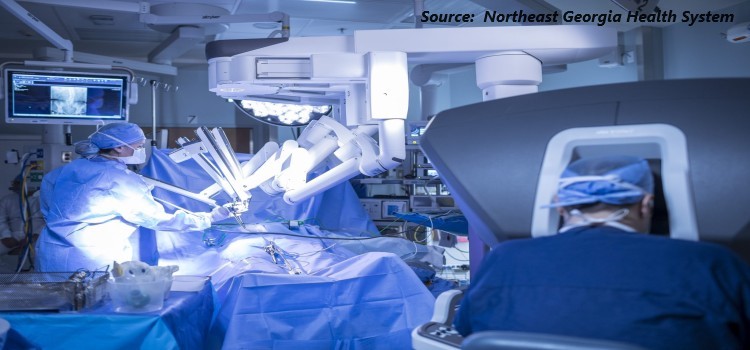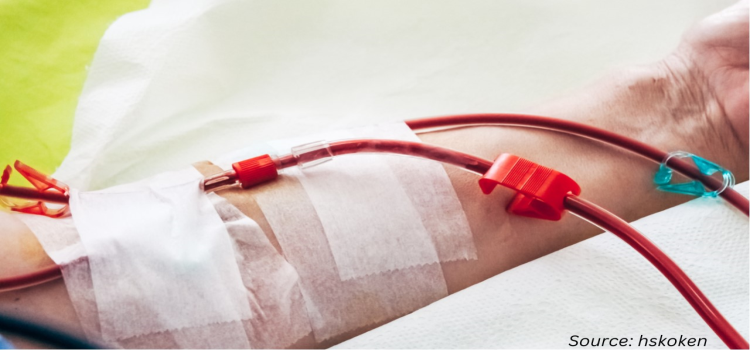
North America Disabled & Elderly Assistive Device Market by Type (Living Aids, Hearing Aids, Mobility Aids, Medical Furniture, and Bathroom Safety Equipment), and by End User (Hospitals, Elderly Nursing Homes, Home Care, and Other End Users) – Opportunity Analysis and Industry Forecast, 2024–2030
Industry: Healthcare | Publish Date: 07-Dec-2023 | No of Pages: 182 | No. of Tables: 136 | No. of Figures: 81 | Format: PDF | Report Code : N/A
Market Definition
North America Disabled & Elderly Assistive Device Market was valued at USD 16.27 billion in 2023, and is predicted to reach USD 20.26 billion by 2030, with a CAGR of 3.13% from 2024 to 2030. The disabled & elderly assistive device industry empowers individuals with disabilities and older adults to live more independent and fulfilling lives by designing and manufacturing specialized tools and systems. This industry includes a wide range of devices and software solutions tailored to address physical, sensory, cognitive, and developmental limitations.
Operating at the convergence of healthcare, technology, and accessibility, it gives rise to innovative solutions such as mobility aids, communication devices, and home automation systems. Fueled by an aging population, rapid technological advancements, and evolving regulatory landscapes, the assistive device industry prioritizes inclusivity and continuously adapts to meet the ever-changing needs of its diverse user base.
Rising Aging Population Drives the Disabled and Elderly Assistive Industry in North America
The aging population in North America makes a significant and growing proportion of elderly individuals within the demographic landscape. This demographic shift has profound implications for the disabled and elderly assistive industry. Firstly, it led to an increased demand for elderly care services and products, encompassing home healthcare, long-term care facilities, mobility aids, medical equipment, and assistive technologies. Additionally, the government's focus on policies and programs tailored to address the unique needs of the aging population provides funding for assistive services and research into age-related conditions and disabilities.
Growing Technological Advancement in Development of Assistive Devices Propels the Regional Market
The disabled and elderly assistive device market in North America is thriving amidst a wave of technological advancements. Innovations such as smart home technologies, wearable devices, and robotics are revolutionizing the assistive device landscape. Smart home integration, characterized by voice-activated assistants and automated systems, is enhancing accessibility for individuals with mobility limitations. Robotics, encompassing exoskeletons and robotic arms, is providing mobility assistance and support for daily tasks to those with impairments.
High Cost and Affordability of Assistive Devices Hinders the Industry Growth
The high cost of assistive device in North America often puts them out of reach for many individuals, especially those in developing and underdeveloped countries who have low or fixed incomes. This lack of access creates a significant barrier for a large portion of the population, preventing them from benefiting from these life-changing tools. Moreover, a widespread lack of awareness about the availability and benefits of assistive technologies among individuals, caregivers, and even healthcare professionals contribute to their underutilization.
Integration of Ai, AR/VR, and IOT creates opportunity in North American Assistive Device Industry
In North America, assistive device is going through a major change, becoming more personalized, accessible, and productive than ever before. This is mainly due to advances in artificial intelligence (AI) and machine learning (ML), which make it possible to tailor assistive devices to individual needs and adapt to changing conditions. The Internet of Things (IoT) and smart home systems also give users more power to control their environments on their own.
Wearable devices and sensors are keeping track of health metrics in real time, giving valuable information for self-care and overall well-being. Mobility aids and exoskeletons powered by robots are adding to physical abilities, while augmented reality (AR) and virtual reality (VR) technologies are changing the way training and rehabilitation programs are done. (VR) These groundbreaking changes are changing the assistive technology industry, making solutions more widely available and better for people who need them.
The U.S. Holds the Dominant Market Share in North American Market
In the U.S., assistive device industry is flourishing, fueled by the rapid adoption of technological advancements. These innovations are transforming the sector, introducing groundbreaking solutions that empower people with disabilities and the elderly to live fuller, more independent lives. From sophisticated robotics that enhance mobility to personalized wearable devices that monitor health metrics, technology is a driving force behind the development of life-changing assistive devices.
Also, the growing recognition and education surrounding assistive devices have played a crucial role in their widespread adoption across the U.S. As healthcare professionals deepen their understanding of the diverse range of assistive technologies available, they are better equipped to inform patients and integrate these solutions into holistic care plans. Public awareness campaigns further contribute to a societal shift, promoting inclusivity and understanding of the challenges faced by individuals with disabilities. This collective awareness not only fosters a positive attitude towards the use of assistive devices but also drives a growing demand for innovative solutions that enhance the overall quality of life for older adults and individuals with disabilities.
Mexico to Witness Substantial Growth in the North American Market
Government initiatives are pivotal in shaping the landscape of the disabled and elderly assistive device market in Mexico. These initiatives comprise a range of strategies, including providing subsidies and funding to make assistive devices more affordable, implementing regulations to ensure safety and quality standards, incorporating assistive devices into healthcare programs, conducting awareness campaigns to reduce stigma, and supporting research and development activities. By addressing financial barriers, ensuring safety compliance, and fostering innovation, these initiatives create an environment conducive to market growth.
The shifting demographic landscape in Mexico marked by a growing elderly population is a key driver for the disabled and elderly assistive device market. Individuals often encounter challenges in mobility and daily living activities. This demographic trend amplifies the demand for assistive devices specifically designed to enhance the quality of life for the elderly. Mobility aids such as walkers and wheelchairs, along with devices addressing sensory impairments and adaptive tools for daily tasks, become crucial for maintaining independence.
Competitive Landscape
Various market players operating in the North America disabled & elderly assistive device market include Invacare Corporation, Sunrise Medical LLC, Bausch & Lomb, Inc., Permobil AB, Siemens Healthcare, Freedom Scientific, Inc., William Demant Holding A/S, Starkey Hearing Technologies, GN ReSound Group, Ai Squared, Blue Chip Medical Products, Inc., MED-EL, Liberator Ltd., Drive Medical Design and Manufacturing, Exact Dynamics B.V., and others.
North America Disabled & Elderly Assistive Device Key Market Segments
By Type
-
Living Aids
-
Hearing Aids
-
Behind-the-ear Aids (BTE)
-
Receiver-in-the-Ear Aids (RITE)
-
In-the-Ear Aids (ITE)
-
Bone Anchored Hearing Aids (BAHA)
-
Canal Hearing Aids
-
Cochlear Implants
-
Reading and Vision Aids
-
Braille Translators
-
Video Magnifiers
-
Reading Machines
-
Others
-
-
Mobility Aids
-
Walkers & Rollators
-
Canes & Walking Sticks
-
Crutches
-
Transfer Lifts or Patient Mechanical Lift Handling
-
Door Openers
-
Others
-
-
Medical Furniture
-
Medical Beds
-
Door Openers
-
Medical Furniture Accessories
-
Riser Reclining Chairs
-
Others
-
-
Bathroom Safety Equipment
-
Shower Chairs
-
Commodes
-
Ostomy Products
-
Bars, Grips, & Rails
-
By End User
-
Hospitals
-
Elderly Nursing Homes
-
Home Care
-
Other End Users
By Region
-
North America
-
The U.S.
-
Canada
-
Mexico
-
REPORT SCOPE AND SEGMENTATION:
|
Parameters |
Details |
|
Market Size in 2023 |
USD 16.27 Billion |
|
Revenue Forecast in 2030 |
USD 20.26 Billion |
|
Growth Rate |
CAGR of 3.13% from 2024 to 2030 |
|
Analysis Period |
2023–2030 |
|
Base Year Considered |
2023 |
|
Forecast Period |
2024–2030 |
|
Market Size Estimation |
Billion (USD) |
|
Growth Factors |
Rising aging population is a significant driving factor for the industry Growing technological advancement in development of assistive devices drives the market |
|
Countries Covered |
3 |
|
Companies Profiled |
15 |
|
Market Share |
Available for 10 companies |
|
Customization Scope |
Free customization (equivalent up to 80 working hours of analysts) after purchase. Addition or alteration to country, regional, and segment scope. |
|
Pricing and Purchase Options |
Avail customized purchase options to meet your exact research needs. |
KEY PLAYERS
-
Invacare Corporation
-
Sunrise Medical LLC
-
Bausch & Lomb, Inc.
-
Permobil AB
-
Siemens Healthcare
-
Freedom Scientific, Inc.
-
William Demant Holding A/S
-
Starkey Hearing Technologies
-
GN ReSound Group
-
Ai Squared
-
Blue Chip Medical Products, Inc.
-
MED-EL
-
Liberator Ltd.
-
Drive Medical Design and Manufacturing
-
Exact Dynamics B.V.




 Speak to Our Analyst
Speak to Our Analyst


































